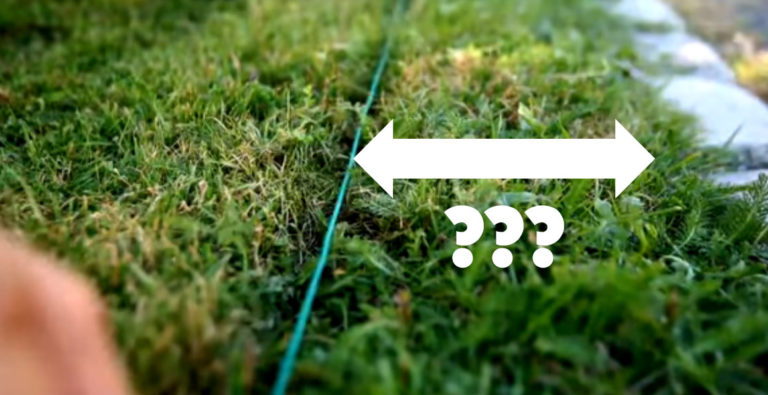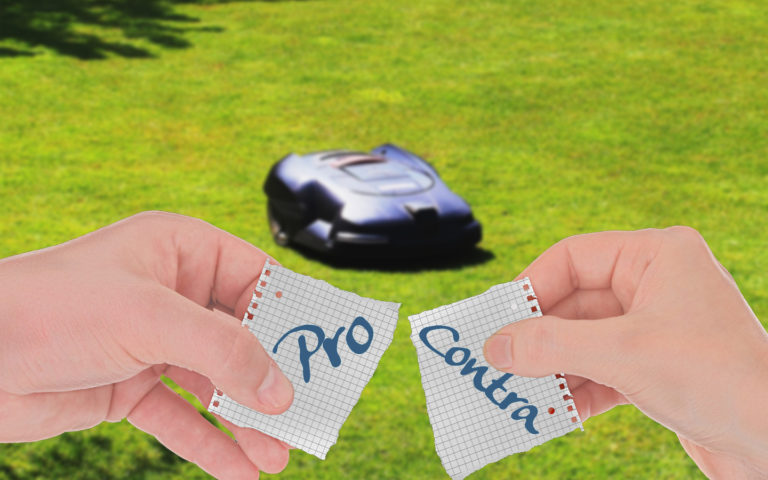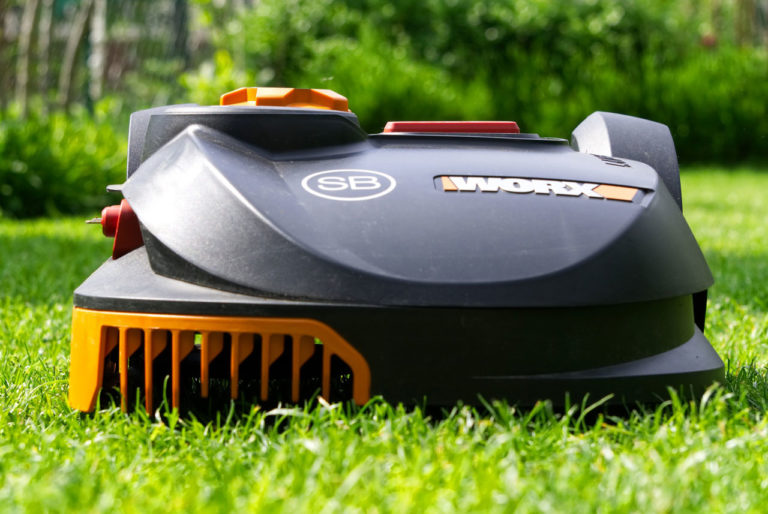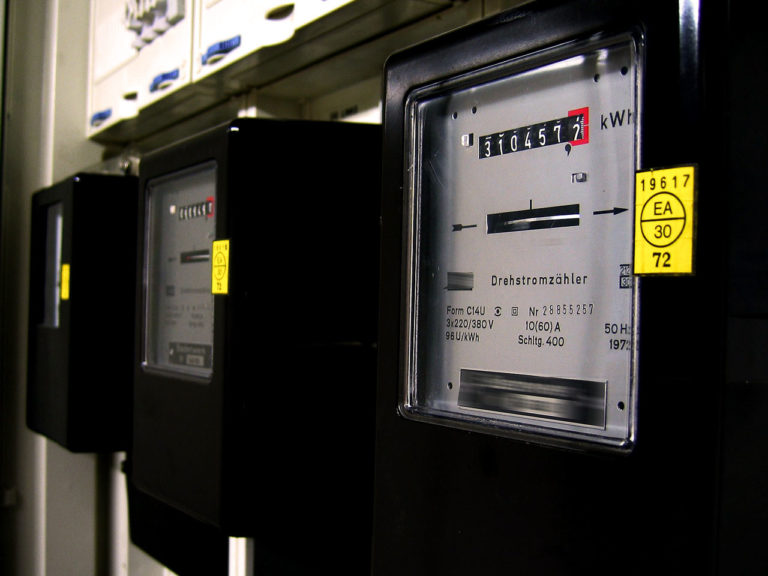I have been working a lot on the installation of robotic mowers lately and would like to explain the first step of the installation after completing the preparatory measures.
How is the charging station for the robotic mower installed? The installation of the charging station can be divided into several steps:
- Finding an optimal location
- Connecting the transformer
- Placing and connecting the charging station
- Attaching the charging station
However, before the charging station is installed, the entire robotic mower installation should be thoroughly planned.
In the next sections I will explain to you exactly how to install the charging station.
Contents
Find a suitable location for the charging station
The location for the charging station should be chosen appropriately. The following points are important:
I would like to explain the individual points in more detail:
Choosing the surface
The charging station must be as easily accessible as possible for the robotic mower, as it is frequented by it quite often. During the day, the robotic mower will often drive into the charging station to recharge itself.
To find its way back to the charging station, the robotic mower can use several systems, depending on the model. You can search for the charging station in random mode, by boundary wire or by guide wire.
If the station is at a tight angle and difficult to access, this can make the return trip more difficult. At short distances, robotic mowers also use radio signals from the charging station to track them down. They then drive directly towards the source of the radio signal in a straight line and then try to park.
For this reason, the area in front of the charging station must be as unobstructed as possible within a radius of 3 meters. This is also the reason why the cable should preferably run straight to the left and right of the charging station for about 3 meters. If the boundary wire runs in the area in front of the charging station, it can confuse the robotic mower when it’s trying to park and interfere with the radio signal from the charging station.
You may still want to place the charging station outside the lawn. This may not be the ideal location, but it is possible, because if no other option exists you may need to place it here to ensure the area in front of the charging station is as free as possible.
For example, if you want to place the charging station on your patio, or behind the edge of the lawn in a flower bed. In this article I have explained exactly what is possible and what problems can sometimes arise.
The surface on which the charging station is located should also be as flat as possible. If the slope at the location is too steep, it can make parking considerably more difficult- for example, a robotic mower can accumulate too much momentum when driving downhill to a charging station at the bottom..
You must also make sure that the plate of the charging station is not bent during placement due to unevenness under the charging station.
A charging station that is as centrally located as possible shortens the average path lengths of the robotic mower when recharging, which means that it mows faster and more efficiently overall.
Further conditions
A power outlet must always be nearby. The low voltage cable that is supplied as standard is usually only 10 meters long and cannot be extended. However, there are longer cables available for additional purchase.
The transformer of the cable must be protected from rain and must also not be exposed to direct sunlight to avoid overheating.
The charging station should also be well protected against water spray, e.g. from a lawn sprinkler. It is a sensitive electronic device with a printed circuit board inside. Penetrating water can damage the electronics.
At the same time your charging station should not be exposed to direct sunlight. This can be harmful not only for the charging station, but also for the robotic mower, which parks in the charging station for a good part of the day, and cannot tolerate too much sunlight.
Especially in summer, the device can get very hot in strong sunlight, which can especially affect the battery life. But UV radiation can also affect your robotic mower. It can cause the body of the robotic mower to age faster and become brittle (almost like humans).
If you can’t find a suitable place that is also protected from direct sunlight and water spray, I can only recommend that you buy a robotic mower garage. I have an extensive overview over different garage models that you can find here.
The choice of a suitable location should generally be made together with the complete planning of the installation. After all, you should also plan where the boundary wire and, if available, the guide wire should run, because these are also dependent on the charging station.
Connecting the transformer
As already mentioned, there should be a socket near the charging station so that you can connect the transformer of the low voltage cable there. This should be protected from sunlight and rain. If the socket is outside, it should be approved for outdoor use. The location of the transformer should also be well ventilated (often the case outside).
Location criteria for the transformer:
- No direct sunlight
- Protection from rain
- Socket left closed for outdoor operation (if outdoors)
- Good ventilation of the site (protection against overheating)
Never connect the transformer directly to the charging station; always use the low voltage cable.
Depending on how you have placed your charging station, the low voltage cable may need to run a little over the work area. This is not a problem- you will just have to anchor the cable firmly to the ground using the hooks provided.
It should be pulled as tightly as possible. In the end you have to be sure that the robotic mower cannot accidentally cut the cable while mowing, because of the cable somehow sticking upwards.
If the cable is too long, you should be careful not to leave it lying somewhere in a coiled form as a spool, as this can interfere with the signals from the charging station. This also applies to the area under the base plate of the charging station. Do not hide the excess low voltage fork underneath it, as it will interfere with operation.
Placing and connecting the charging station
The rest is easy now.
- Step 1: Simply place the charging station in the appropriate location. Take care not to bend the base plate, as already mentioned. It must also not be stepped on.
- Step 2: If your charging station has a protective flap, fold it forward.
- Step 3: Connect the low voltage cable to the charging station
- Step 4: Plug the power cable of the transformer into the socket
Attaching the charging station
Optional at this point: Secure the charging station to the ground using the screws supplied. Extra holes are provided in the base plate for this purpose (Warning: Do not drill any extra holes, otherwise the warranty will be voided).
You can also wait to complete this step if you notice during operation that you should move the charging station a little bit. If you plan to do so, leave some room for maneuvering later when you connect the boundary wire and the guide wire. You can also remove it later.
Related questions
Can the charging station be installed outside the lawn? Although the robotic mower manufacturers do not provide for the charging station to be installed outside the lawn, this is possible if certain points are observed. You can find a detailed explanation of how to do this here.
Can the charging station also be placed on an island? The charging station can also be installed on an island. However, this island should be large enough. However, for robotic mowers without a guide wire, it cannot be installed on a real island, but must be installed on a pseudo-island.





